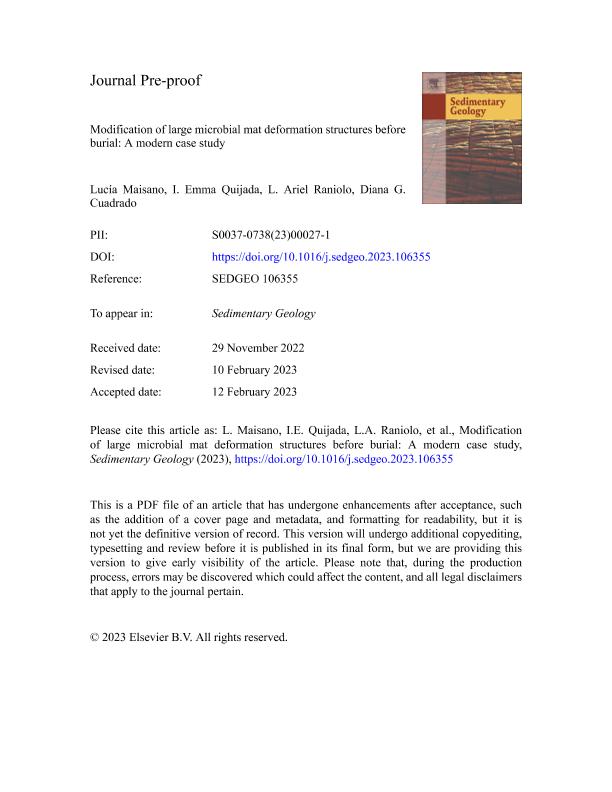Artículo
Modification of large microbial mat deformation structures before burial: A modern case study
Fecha de publicación:
02/2023
Editorial:
Elsevier Science
Revista:
Sedimentary Geology
ISSN:
0037-0738
Idioma:
Inglés
Tipo de recurso:
Artículo publicado
Clasificación temática:
Resumen
The presence of microorganisms gives remarkable plasticity and flexibility to wet sediments. Under these circumstances, a coherent microbial mat is developed, which is loosely attached to the underlying sediment layer. These thick microbial mats are capable of being lifted from the underlying sediments in response to high-energy events, such as currents and waves forming several types of synsedimentary microbial mat deformation structures. This study analyses excellent examples of these structures developed in Paso Seco (Argentina), a modern coastal flat colonized by microbial mats frequently inundated during storms, and the modifications that affect them before burial. To achieve this, the hydrodynamic conditions in the coastal flat over time were interpreted from water level records obtained with HOBO loggers. Field photographs were obtained to document the microbial structures (such as flipped-overs, tear mats, roll-ups, mat chips, and folds) covering the area after a high-energy event and over the course of the following two years. Specifically, emphasise was put in roll-up structures because of their large size. Sediment samples were extracted to make thin sections for petrography analysis. Once the microbial structures are formed, they show gradual changes caused by the hydrodynamic conditions that control the sedimentary environment, and on several occasions, these changes are preserved in the sedimentary profile. Our observations and measurement of modern sedimentary structures and the in-situ documentation of their evolution may be helpful for the identification and interpretation of analogous sedimentary structures in the fossil record, which could have undergone similar modifications prior to their burial.
Palabras clave:
Microbial mats
,
Deformation structures
,
Roll-up structures
,
erosion
Archivos asociados
Licencia
Identificadores
Colecciones
Articulos(IADO)
Articulos de INST.ARG.DE OCEANOGRAFIA (I)
Articulos de INST.ARG.DE OCEANOGRAFIA (I)
Citación
Maisano, Lucia; Quijada, I. Emma; Raniolo, Luis Ariel; Cuadrado, Diana Graciela; Modification of large microbial mat deformation structures before burial: A modern case study; Elsevier Science; Sedimentary Geology; 447; 2-2023; 1-36
Compartir
Altmétricas




